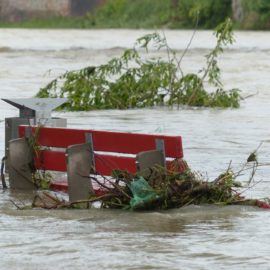
The state has been in touch with the Corp on finding and the sources of funding. The state won big!
The state has apparently won a battle with the Army Corps of Engineers over how to offset environmental damage that is being caused by the construction of the $1.2 billion West Shore Lake Pontchartrain hurricane risk reduction levee in the River Parishes, according to a Corps report released Friday. At issue is whether the state can use the environmental benefits of its planned $200 million River Reintroduction into the Maurepas Swamp project, a freshwater diversion that will be built adjacent to part of the levee system, to offset the damage the new levee will do to wetlands. The alternative would be paying to convert farmland in St. James Parish and open water in St. Tammany Parish into swampland, and buying credits in a series of privately owned “mitigation banks.” Mitigation banks are areas where private landowners are paid to create new swamps, wetlands or forested wetlands. That latter mitigation plan, with the two swamp conversion projects and mitigation bank credits, was the one the Corps said in April 2020 that it wanted the state to pay for. Back in 2015, that plan would have cost the state an estimated $54.7 million in 2015, but state officials say the price tag would now be closer to $120 million. The state appealed, pointing out that while the diversion’s price tag was significantly higher than the mitigation plan the Corps was pushing, it would only apply $120 million of the cost — the cost of Corps’ originally preferred plan — as its share of the levee’s cost. The state also noted that the diversion would improve swampland directly affected by the levee. “It makes sense for the projects being implemented together because they occupy the same space and are being built at the same time,” said Bren Haase, executive director of the state Coastal Protection and Restoration Authority, the official state sponsor of the two projects. “Restoring that forest in front of the levees is a good thing. It helps improve the levee’s resilience to storm surge,” he said.
nola.com
What was the Corps decision?
In the supplemental environmental impact statement released Wednesday, the Corps said it had compared the state’s preferred plan to the original plans and to a version of the state plan that also included privately owned land. The report concluded that while the Corps’ original plan scored higher on cost issues, risk and reliability, and some environmental issues, the state’s proposal scored higher on issues involving improvements to the watershed of the Maurepas Swamp and its ecology, and both plans would take an equal time to complete. The other state plan was dismissed as too expensive. Because the state, as the non-federal sponsor of the project responsible for mitigation costs, expressed a preference for its own plan and agreed to pay for any costs higher than the Corps’ mitigation expense estimate, the Corps concluded it was acceptable.
The states idea is acceptable. The Corps will pay the overages. Good news!
The state must still also pay for credits at bottomland hardwood mitigation banks to offset damages by the new levee to that type of habitat. The report estimated the levee will damage as much as 4,877 acres of those hardwoods. Since the state already has received most of the construction costs for the diversion from fines stemming from the BP oil spill, the use of the diversion would reduce the state’s overall costs for both projects.
Cutting costs for two projects is music to the ears. What is being done in these projects?
The diversion is being designed to benefit nearly 45,000 acres, or nearly 70 square miles, of cypress-tupelo freshwater swamp on the edges of Lake Maurepas. It would do that by diverting up to 2,000 cubic feet per second of Mississippi River water through a 5 1/2-mile canal adjacent to the western side of the West Shore levee system to the wetlands on the west side of the lake. The benefits from the diversion will offset 10,892 acres of swamp that are expected to be damaged by the levee, the Corps said. Copies of the environmental report are available at the Corps web site. Comments on the plan can be submitted through May 2 by emailing mvnenvironmental@usace.army.mil, or by mail to Landon Parr; U.S. Army Corps of Engineers; Regional Planning and Environmental Division South; CEMVN–PDC-C; 7400 Leake Avenue; New Orleans, Louisiana 70118. A final decision on the mitigation plan will follow, most likely in June, officials said.
The work has started and is continuing. More protection for this area made sweeter by paying less.



